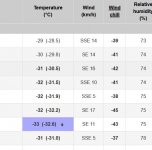pixelated
Member
Mini Me said:Firstly, I am not familiar with US terminology used in HVAC discussions such as capacity in tons etc. Simply put, if a central unit breaks down the whole house is affected, it happened with one of our two systems and we decided individual wall (not window) units was the way to go as it took away the risk of the whole house being affected. If your winter is mild they work well and only take a few hours to install and cost pennies to run. BTW I have no idea what a lineset is so please ignore my comments if they don't apply. Minisplits are a relatively new thing in the US from what I can gather and they don't work in temps below zero.
Fujitsu and Mitsubishi, and presumably others make mini splits that provide effective heat down to -15 F/-26 C without using heating elements. Heat pump technology has come a long way.
I went through a bit of a leap of faith when we bought ours, but the claim is real. Residential mini splits are relatively new here, but I see more of them all the time.


